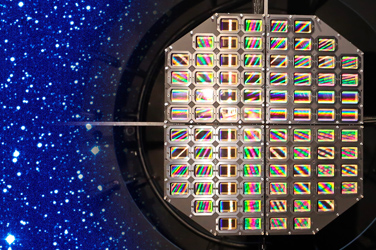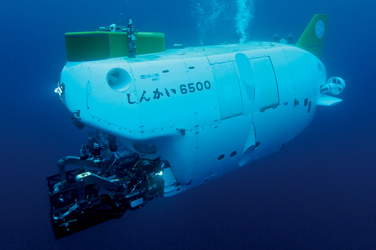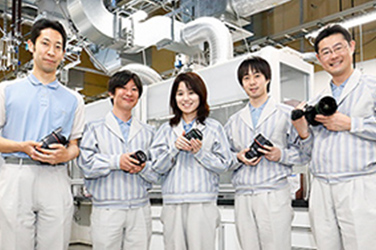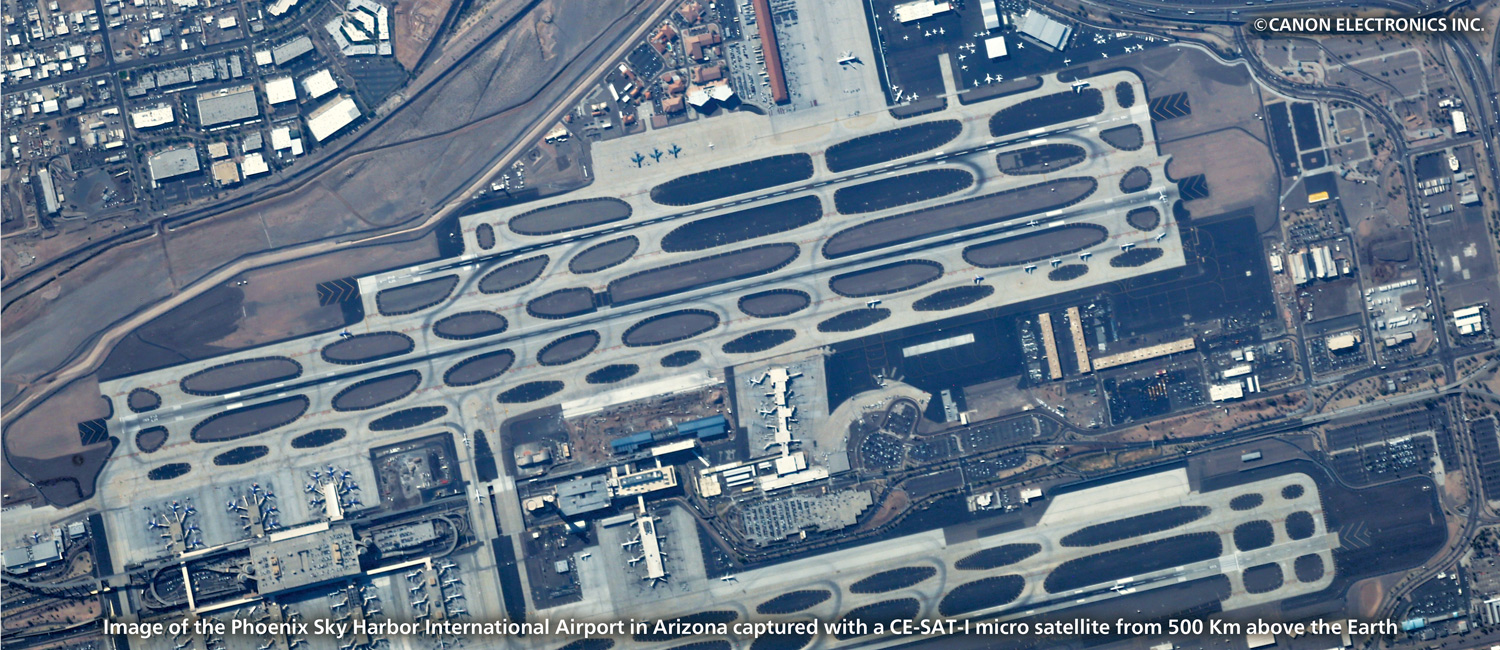

Exploring the Final Frontier: Outer space
Satellite Development
The Canon Group is fully mobilizing its technologies with Canon Electronics Inc.'s entry into the micro-satellite industry.
We are steadily hitting milestones towards exploring the final frontier: outer space.
October 20, 2022
Toward the Next Frontier
In 2017, a rocket carrying the CE-SAT-I micro satellite, developed by Canon Electronics, was launched from a space center in southern India. At 17 minutes and one second after liftoff, the micro satellite entered space, successfully reaching its scheduled orbit. This tiny satellite, measuring only 500 mm x 500 mm x 850 mm, was a major step forward for Canon Electronics.
The endeavor began with an order from the president of Canon Electronics, Hisashi Sakamaki: “In the future, a top company will be one that can master space. Let’s be a trailblazer that sparks a dream in the minds of young people.”
The Canon Electronics Inc. Future Technology Laboratory, currently in charge of the effort, is led by Senior Managing Executive Officer & Group Executive Tsumori Sato, who says he was initially quite surprised by Mr. Sakamaki’s declaration. However, Canon Electronics already had the technological foundations needed to develop a micro satellite—the motor technologies for attitude control of the satellite, lens technology ranging from macro to zoom and miniaturization technologies for eliminating wasted space. In addition, Canon Electronics could leverage the electronic, mechanical, optical, materials and other technologies of the Canon Group to make the satellite development possible.
The result was the CE-SAT-I. In a small chassis, the company fit such components as a digital single-lens reflex (DSLR) camera with a catadioptric optical system and a compact camera for wide-angle image capture. Using the DSLR camera, the imaging system can provide a 0.9 m ground resolution from a 500 km orbit within a 5 km x 3 km frame size, making possible the identification of individual cars on a road. The compact camera can capture wide-angle shots within a 740 km x 560 km frame.
Currently, CE-SAT-I is operating smoothly and sends image data to Earth every day.
Space: A Different Environment
Micro-satellite development involves challenges such as the risk of system shutdowns and malfunctions due to radiation and the heat generated in a vacuum environment. This is because the operating environment is in space, which is very different from that on the ground.
Canon Electronics has already succeeded in launching two satellites by solving problems through the use of consumer components that are resistant to radiation and the idea of a radiative cooling method using metal. Equipped with a Canon camera and an ultra-high-sensitivity camera, the satellites are transmitting various image data to the earth on a daily basis. These include wide-area images of 760 km by 571 km from an orbit 500 km above the ground, high-resolution images that can even recognize cars, and nighttime images with a light source as faint as moonlight.
In addition, SPACE ONE, an affiliate of Canon Electronics, has completed construction of Japan’s first privately owned launch complex in Kushimoto, Wakayama, and has been working toward launching rockets.
Semi-Customizing the Satellite
Canon Electronics's micro-satellite project is proceeding smoothly, but designing an optimal business model for micro-satellite is still a major hurdle to overcome. Currently, the company plans to generate revenue through sales of micro-satellite, micro-satellite's components, and visual data recorded by the satellites.
According to Yoshito Niwa, Deputy Group Executive Satellite system laboratory, “In order to satisfy the needs of users, the semi-customization of satellites will be required. We are currently engaging in research and development to enable us to offer a greater range of variations in terms of the size of the telescope that is mounted on a satellite. In addition, the high-resolution images captured from space contain information that is valuable in many ways. We intend to further refine technologies for analyzing images and increase the added value of these images to meet the needs of our clients.”
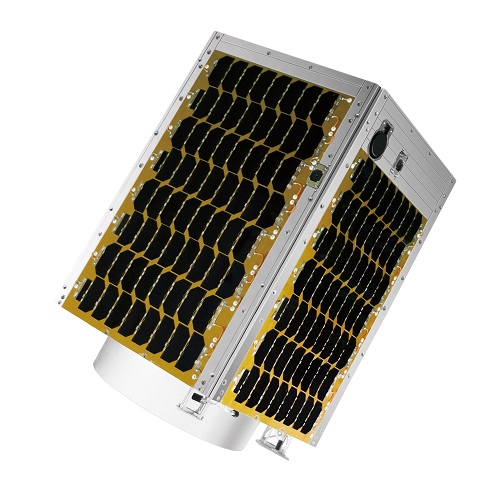

The micro-satellite “CE-SAT-Ⅰ”


